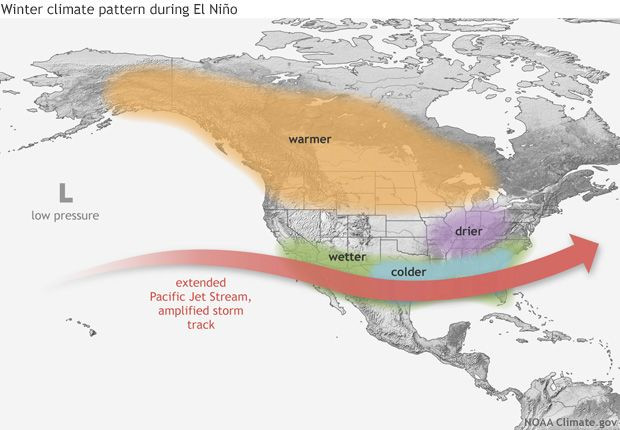NASA Research Shows El Nino Is Connected To CO2 Levels

Scientists have had a hard time determining whether the ENSO cycle, El Niño and La Niña, impact climate change, or whether climate change can impact the cycle, for years. New research released by NASA on Thursday shows that the two actually might be linked.
Thanks to data collected by NASA’s Orbiting Carbon Observatory-2, researchers published five new papers in Science on Thursday. One of those papers focuses on the link between El Niño and carbon emissions in the tropical regions of the world. The data collected by the OCO2 supports the hypothesis that the 2015-2016 El Niño season was to blame for the record breaking annual increase in atmospheric CO2 levels that year.
What is El Niño?
The El Niño-Southern Oscillation, or ENSO, cycle, refers to the conditions in the Pacific Ocean close to the equator. If the conditions are colder than usual, it’s a La Niña year, but if the conditions are warmer than usual in that part of the ocean then you get an El Niño. Both of these can cause extreme weather like severe rain or drought. But the two are fairly unpredictable, they can only be predicted about three to six months in advance and they don’t work on much of a schedule in the long-term either.
That El Niño season was also one of the largest on record and the hot and drought inducing conditions it created in the tropical regions of South America, Africa and Indonesia, according to NASA. Those three regions reportedly released 2.5 gigatons, or 2.5 billion tons, more carbon during that year than they did in 2011. The data from the OCO2 as well as data from the National Oceanic Atmospheric Administration shows that the 2015-2016 season saw CO2 increases that were far above the average amount usually gained each year.
In a typical year the increase of CO2 those regions saw was usually around 4 gigatons total, but during that season the total was about 6.3 gigatons. What tipped researchers off that the El Niño season might have caused the increase is the fact that emissions from humans stayed relatively the same through these years.
The conditions in the three regions that emitted most of the carbon, brought on by El Niño, are now better understood by researchers. For example in tropical Africa there was no drought, but above average temperatures killed off more parts of the ecosystem which then decomposed and released more CO2 than usual. Meanwhile in South America there was severe drought and the stressed vegetation couldn’t absorb as much CO2 from the air as usual, according to NASA.
This also means that they’ll be able to improve their carbon models, meaning better predictions of any changes in the climate. “The team's findings imply that if future climate brings more or longer droughts, as the last El Niño did, more carbon dioxide may remain in the atmosphere, leading to a tendency to further warm Earth," Annmarie Eldering, a deputy project scientist, told NASA.
© Copyright IBTimes 2024. All rights reserved.



















